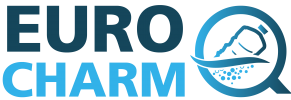Project news How do you go through thousands of papers? - Screening and analysis of existing methods and protocols for plastic pollution monitoring
Harmonizing methods requires the gathering of existing methods and an analysis of their strengths and weaknesses. The first work package of EUROqCHARM is now generating that specific inventory for monitoring methods targeting plastic pollution. And it is not a small task to do …

The presence of plastic debris in the ocean has been confirmed in every place on Earth, even the most remote areas in the world. Spotting plastic items is relevant information, but quantify them is more challenging.
After the initial exploratory phase which has generated an impressive acceleration in published papers, it is now necessary to take fundamental steps to advance the science of monitoring environmental plastics. Harmonised and standardized methods are of the utmost importance for accurately evaluating the amounts of plastics in different media and thus for enabling the assessment and management of these contaminants. A one-size-fits-all solution doesn’t exist so it’s necessary to find the pros and cons of all methods used so far. This will allow us to identify the proper tools to decide how to implement a monitoring plan.

Web of Science and Scopus generate standardized and high-quality academic publication information, and they are used extensively for the bibliometric examination of the evolution of scientific issues. By searching these repositories, we are exploring all scientific literature to sort out methodological information for a Systematic Review.
Literature reviews can be narrative or systematic. Narrative reviews are mainly descriptive and include a selection or subset of studies usually based on availability or author selection, which may include an element of selection bias. Systematic reviews differ from traditional narrative reviews in many instances. They are based upon an a priori detailed and comprehensive plan and search strategy. The aim is to reduce bias by identifying all relevant studies. Sometimes, systematic reviews include a meta-analysis but in our workplan, a SWOT (strengths, weaknesses, opportunities, and threats) analysis of the different methods is being applied.
The team involved in Work Package 1 has been meeting on several occasions since the beginning of the project. A set of relevant keywords was selected and a working plan for the Systematic Review has been defined. Two consecutive runs of literature selections have been made so far with more than 5000 potentially relevant titles scanned by two readers. The last scan based upon papers’ titles identified more than 2000 papers. The abstracts of this selection are currently being scanned by a new group of readers to define the final and ultimate list of relevant papers to perform our SWOT analysis on.
